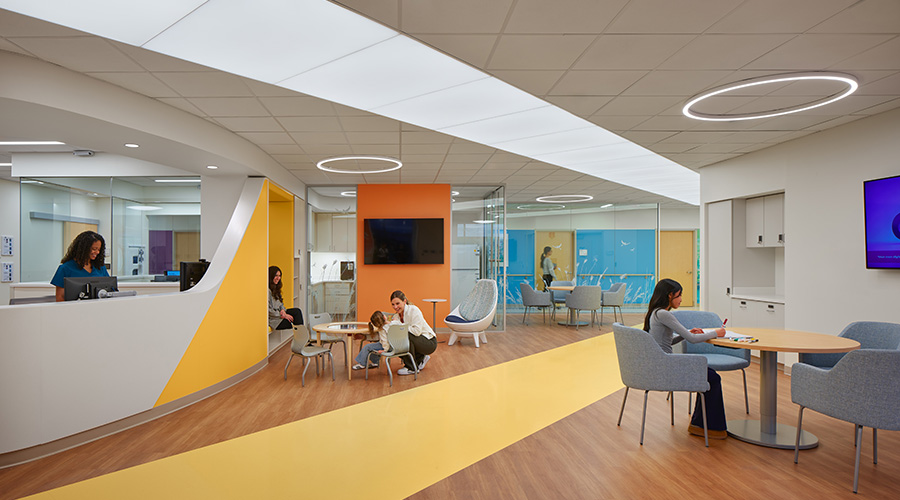Today’s healthcare facilities need disinfection solutions to address a wide range of threats, from seasonal challenges like the common cold and influenza viruses, to dangerous pathogens that commonly cause healthcare-associated infections (HAIs), like Clostridium difficile (C. difficile), Vancomycin-resistant enterococci (VRE) and methicillin-resistant Staphylococcus aureus (MRSA). Despite progress in recent years, HAIs still claim the lives of thousands of patients each year – according to the U.S. Centers for Disease Control and Prevention (CDC), an estimated one in every 25 hospitalized patients has at least one HAI on any given day.
Healthcare-associated pathogens can survive on environmental surfaces, equipment and medical devices for extended periods of time and be spread by touch to patients, healthcare workers and other surfaces, making thorough cleaning and disinfecting protocols critical to infection prevention and control. A recent meta-analysis found that patients admitted to a room that previously housed a patient colonized or infected with pathogenic bacteria, including MRSA, VRE, or C. difficile, are twice as likely to be infected with the same pathogen.
Today, healthcare facilities have more, and better, options than ever before to help fight HAIs, both when it comes to manual surface disinfectants, and no-touch technologies such as ultraviolet light (UV) decontamination systems, foggers and misters. Below, we’ll take a closer look at the latest innovations and technologies in the space as well as best practices for successful implementation to help prevent the spread of healthcare-associated pathogens.
Innovation in manual surface disinfectants
In recent years, significant innovation in manual healthcare surface disinfectants has given rise to several new trends. For example, many new products on the market are formulated as cleaner-disinfectants, allowing for one-step cleaning and disinfection of surfaces. Technological advances in disinfectant chemistry have also enabled the development of pre-mixed, ready-to-use disinfectants that harness the power of fast-acting oxidative chemistries such as bleach and hydrogen peroxide, but are shelf-stable. Newer products are also optimized for broad surface compatibility, which helps enhance infection prevention practices by enabling more consistent, compliant cleaning and disinfecting practices throughout patient environments.
However, with so many new options, it can be challenging for healthcare facilities to identify the best products to suit their needs. Below are a few things healthcare facilities should keep in mind when evaluating products to help protect against HAIs and antibiotic resistant bacteria:
-
Select products with broad antimicrobial efficacy. To help safeguard patient environments against emerging and re-emerging threats, it is important to select U.S. Environmental Protection Agency (EPA)-registered surface disinfectants designed specifically for healthcare facilities. Look for EPA-registered healthcare disinfectants with kill claims against prevalent healthcare-associated pathogens including bacteria, enveloped and non-enveloped viruses, fungi, and C. difficile spores. For example, in addition to EPA-registered kill claims for C. difficile spores, MRSA, VRE and Carbapenem-resistant Klebsiella pneumoniae, Clorox Healthcare® Bleach Germicidal Wipes and Clorox Healthcare® Bleach Germicidal Cleaners also have kill claims for Influenza A and Influenza B viruses. They also meet the EPA’s guidance for environmental disinfection of Candida auris, an emerging drug-resistant fungus that has caused outbreaks in healthcare settings and presents a serious global health threat.
-
Protect surfaces by evaluating disinfectant compatibility. It is also important for healthcare facilities to ensure environmental infection prevention measures can be implemented without causing damage to the surfaces and equipment on which they are used. Newer products such as Clorox Healthcare® Fuzion™ Cleaner Disinfectant are optimized for broad surface compatibility, eliminating the need to make tradeoffs between efficacy and surface compatibility. By selecting surface disinfectants that are compatible with a broad range of surfaces found within healthcare facilities, such as plastics, acrylic, laminate and stainless steel, healthcare facilities can maximize product use and prevent surface damage. This can help facilities standardize their cleaning and disinfecting protocols and protect their bottom lines by eliminating the need for multiple products and the risk of damage that can result in the replacement of equipment. To evaluate surface compatibility, teams should first review the disinfectant labels to check for compatibility with target surfaces and refer to equipment cleaning and care guides to ensure the disinfectant solution meets manufacturer recommendations.
-
Encourage compliant usage by selecting fast-acting disinfectants. Healthcare facilities should select ready-to-use, fast-acting cleaner-disinfectants with short contact times (e.g., 30 seconds – three minutes). Ready-to-use cleaner-disinfectants allow for one-step cleaning, facilitating faster room turnover and greater compliance. In our experience, the easier a product is to use, the greater the likelihood it will be used correctly.
Despite great advances in disinfectant chemistries and clinical research on strategies to optimize environmental hygiene, the fact remains, manual cleaning and disinfection practice is often suboptimal. Studies show healthcare workers are adequately cleaning and disinfecting fewer than 50 percent of hospital room surfaces and less than 22 percent demonstrate full compliance with contact isolation precautions in C. difficile patient rooms. However, the healthcare industry has responded to these challenges by introducing new whole-room technologies like UV decontamination systems.
UV and “no-touch” technologies
UV technology offers an extra layer of protection by killing microorganisms in high-risk settings or areas of the environment that are difficult to clean manually and may otherwise be missed or insufficiently addressed due to human error. UV devices such as the Clorox Healthcare® Optimum-UV Enlight® System utilize ultraviolet-C (UV-C), the highest-energy form of ultraviolet light, to inactivate pathogens in the healthcare environment. When the DNA of a microorganism absorbs UV-C energy, the DNA sequence becomes disrupted, rendering the cell unable to grow or reproduce. Without the ability to reproduce, the microorganism is no longer infectious, and rapidly dies.
Like manual surface disinfectants, healthcare facilities have several options to choose from for no-touch technologies. Below are a few things facilities should keep in mind when evaluating no-touch technologies:
-
Evaluate device features. When evaluating a no-touch technology, healthcare facilities should consider device features, from product design, ease-of-use, cost, and safety features, to maintenance requirements and data collection and analysis options. The marketplace has matured over the past few years and there now a range of options to choose from. Evaluating these features can help facilities ensure they purchase the right device to meet their individual needs.
-
Review support offerings. In addition to device features, healthcare facilities should determine if the manufacturer provides clinical and laboratory evidence as well as maintenance, public relations, and/or marketing support. Healthcare facilities should verify the efficacy, performance and functionality of the device by reviewing results of third-party laboratory testing for kill claims against key healthcare pathogens and scientific studies on facility usage. Additionally, by reviewing support offerings, healthcare facilities can ensure they are investing in not only a top technology but a real partner who is committed to providing in-person training and in-servicing to educate end users.
As healthcare facilities work to respond to the challenges presented by HAI-causing pathogens, many are re-evaluating their infection prevention strategies and beginning to integrate new products and technologies to enhance environmental hygiene and patient safety. Whether you are considering investing in new “no-touch” technologies, or making a seemingly small change, like implementing a new broad-spectrum disinfectant that is optimized for surface compatibility, remember that the right products paired with the right protocols can make a big difference. Remember, even perfect products and protocols won’t work as intended if they are not implemented or followed correctly. Ongoing education, training and monitoring are essential to reinforce best practices and ensure compliance.
Sarah Bell-West, PhD, and Katherine Velez, PhD, are scientists wth Clorox Healthcare.
1. https://www.cdc.gov/hai/surveillance/index.html. Accessed Aug. 6, 2017.
2. Mitchell BG, et al. “Risk of organism acquisition from prior room occupants: a systematic review and meta-analysis.” J Hosp. Infect. 2015; 91(3):211–217.

 Contaminants Under Foot: A Closer Look at Patient Room Floors
Contaminants Under Foot: A Closer Look at Patient Room Floors Power Outages Largely Driven by Extreme Weather Events
Power Outages Largely Driven by Extreme Weather Events Nemours Children's Health Opens New Moseley Foundation Institute Hospital
Nemours Children's Health Opens New Moseley Foundation Institute Hospital Code Compliance Isn't Enough for Healthcare Resilience
Code Compliance Isn't Enough for Healthcare Resilience Ribbon Cutting Marks First Phase Completion for New Montefiore Einstein Facility
Ribbon Cutting Marks First Phase Completion for New Montefiore Einstein Facility